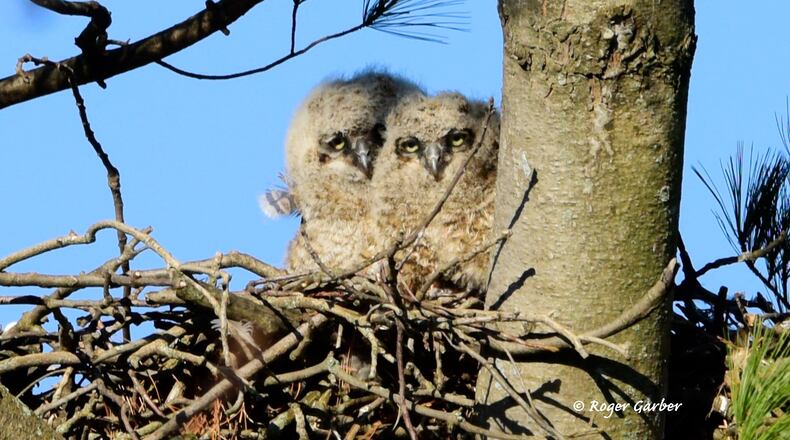Last spring, a skulk of five or six fox pups drew lots of attention from Woodland visitors, and their cuteness even became a small nuisance for the animals themselves. A pair of baby great horned owls had their own fair share of attention in spring 2019.
“Word got out (about the foxes), and then we had people parking and camping out, looking and starting to go around them,” said Angie Hoschouer, Woodland Cemetery and Arboretum manager of development and marketing. “You know, it’s nature, and these are wild animals, and yes, they just happen to be in our cemetery which is an open public place. However, we don’t want people camping out … or having people come up to them.”
The cemetery never wants to shut its gates to the public, Hoschouer said, but at the same time, visitors are in the animals’ natural world, and the animals deserve respect — and space.
In addition to being respectful to the wildlife, it’s also just as important to remember that Woodland is an active cemetery, with multiple services performed each day. Too many enthusiasts attempting to catch a glimpse of a cute baby animal could very easily disrupt a family trying to take a moment to grieve a loved one, Hoschouer said.
Though Hoschouer talks about the importance of admiring the animals from a distance and acknowledging their wildness, she is quick to add that the cemetery does enjoy its visitors delighting in a rare fox or owl spotting.
Credit: CONTRIBUTED
Credit: CONTRIBUTED
“People just need to be smart, because we want people to see something you’re not going to see every single day … and what you’re seeing here is such a peaceful setting, and let’s let it remain peaceful,” Hoschouer said.
It makes sense that the grounds would support a healthy community of wildlife, as Woodland is home to over 3,000 trees and 165 specimens of native Midwestern woody plants across the Arboretum’s 200 acres of rolling land. According to Hoschouer, it’s actually relatively common for cemeteries adjacent, or in close to proximity, to downtown districts to have animal residents typically found in forests or rural areas.
As the end of winter nears, groundhogs are beginning to make regular appearances — and so begins a season of activity and excitement.
“We have a lot of groundhogs scattered through the through the grounds, and you’ll see them pop up, in and out of the manholes in the drainage sewer system that we have through the cemetery,” Hoschouer said. “And of course, the foxes are also doing the same thing, they’re coming in and out of the sewer system because that’s where the groundhogs are at.”
The nature of cemeteries and their purpose of giving people’s loved ones a peaceful resting place often brings visitors to contemplate life itself and its cycles. Considering the lives of the animals that call Woodland home adds significance to that natural cycle.
The coyotes eat the foxes, the foxes eat the groundhogs and so on. As Hoschouer often says, “it’s truly the circle of life here.”
“I was actually out on a tour, and I could hear the Cooper’s hawks, because they kind of scream,” Hoschouer said. “We were watching them in the air and one flew down, grabbed the squirrel and took it back up. And I saw that happen, we saw the whole thing happen, and I just turned around to our group and I said, ‘And there we have the circle of life, friends.’”
Credit: CONTRIBUTED
Credit: CONTRIBUTED
About the Author



